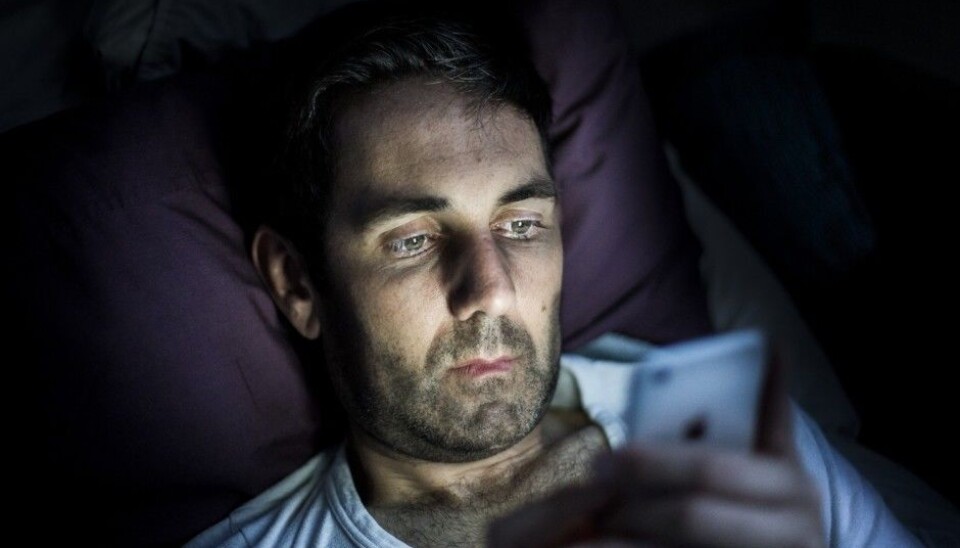
Smartphone app can reveal eye disease
Smartphones and tablets can be equipped with an app that can help detect potentially blinding deteriorations of the eye. This can even be much more effective than traditional vision tests, according to a Swedish study.
Many elderly people experience serious loss of vision caused by disorders such as cataracts and glaucoma. Both of these can be treated through surgery. But another common age-related change in the eye is more serious and can permanently blur or destroy an old person’s vision.
Changes in the oval-shaped, yellow spot near the centre of the retina, the macula lutea, or more commonly simply the macula, result in serious loss of vision among many over the age of 60. This age-related macular degeneration, or AMD, is one of the commonest causes of central vision loss among the elderly in the industrialised countries.
It can injure this vital area of the retina and make it progressively harder to read and discern details sharply. It can be divided into three stages: early, intermediate and late.
Late stage AMD occurs in two varieties, wet and dry. The wet form can be treated to slow down the degeneration. Early detection of functional stages of AMD improves the odds for the outcome of treatment.
Mobile detects changes

Swedish scientists have now created applications that enable people to test themselves using their smartphone.
These apps can test how well you see and send the results to an medical clinic for analysis.
These tests also work better than the usual vision exams, according to the study conducted at the University of Gothenburg’s Sahlgrenska Academy.
The apps can reveal changes in the macula much more precisely than traditional tests do, according to the research.
“The results of normal eye chart exams depend on how much time a person is given to answer,” says Lars Frisèn.
A normal eye-test chart is not all that sensitive because the letters or numbers are solid. He explains that the symbols on the mobile test are therefor constructed of dots, as this makes it easier to discover damage to the cones and rods in the retina.
You read what you see
Both tests are self-explanatory. One uses digits fashioned from small bright dots. These numbers only flash on for an instant before disappearing.
The user’s task is to say the numbers out loud. The variations in the quantity of dots change the degree of difficulty. The answers are recorded and compared with the correct ones and the results are sent to the clinic.
This app is called MultiBit and can be downloaded for free.
“But it has to be activated by your doctor,” sier Lars Frisén.
Letters
The second app works according to the same principles, but with letters rather than digits.
The letters pop up in changing combinations and sizes, and the test is built up like a standard vision test.
This app is called Celego and it has not yet been released on the market.
Liberating resources
The vision tests provided by the app should be able to substitute for some of the controls that are currently conducted at clinics, according to Frisén, who led the team that developed the software applications.
He thinks it will thus help reduce the pressure on hospital resources.
“The superior quality of the tests enables the app usage to replace many patient visits, liberate hospital resources and thus reduce waits,” says Christina Winther, who recently defended her PhD on the subject at the University of Gothenburg.
Medicine available
The wet variety of AMD can be treated. But Nordic hospitals are often inundated with patients the waiting lists for non-life-threatening surgery can be long. Patients run the risk of losing sight permanently while waiting for help.
The medication which can slow down the disease is given through injections in the eye. The disease is chronic and involves periodic treatment.
Winther says that many patients consider best about the treatment sessions is that afterwards they can read better.
He thinks the reading apps can also function as a post-treatment control because it enables doctors to assess a patient’s reading abilities and reading speed.
-----------------------------------
Read this article in Norwegian at forskning.no
Translated by: Glenn Ostling
Scientific links
- Christina Winther: Aspects on Function in Age-Related Macular Degeneration. PhD dissertation 29. januar 2016
- Christina Winther, Lars Frisén: Self-Testing of Vision in Age-Related Macula Degeneration: A Longitudinal Pilot Study Using a Smartphone-Based Rarebit Test. Journal of Ophthalmolog. Volume 2015 (2015), Article ID 285463, Doi.org/10.1155/2015/285463








